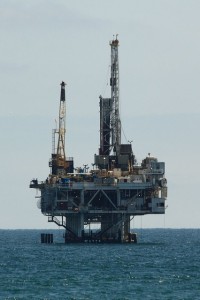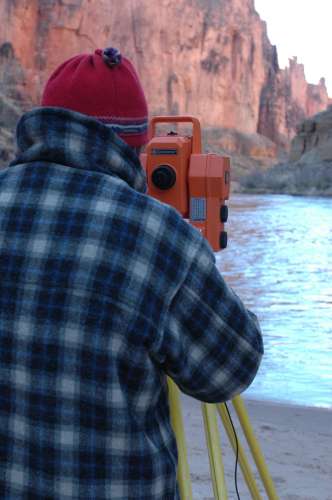 Jessica Wentz
Jessica Wentz
Associate Director and Fellow
Earlier this month, I visited Savannah, Georgia to talk with concerned citizens about the environmental review process for oil and gas infrastructure in their state. My presentation focused on how the public can use the National Environmental Policy Act (NEPA) to ensure that agencies evaluate the full scope of environmental impacts associated with major projects, such as Liquefied Natural Gas (LNG) terminals, pipelines, and offshore drilling. The event was hosted by the Center for a Sustainable Coast, an environmental NGO in Georgia.
One of the key points of discussion was that NEPA requires agencies to evaluate the “indirect impacts” of projects, including any indirect greenhouse gas (GHG) emissions associated with the expansion of oil and gas infrastructure. The U.S. Council on Environmental Quality (CEQ) recently issued draft guidance clarifying that the indirect impact analysis should encompass:
“[E]missions from activities that have a reasonably close causal relationship to the Federal action, such as those that may occur as a predicate for the agency action (often referred to as upstream emissions) and as a consequence of agency action (often referred to as downstream emissions).”
But despite this guidance, the Federal Energy Regulatory Commission (FERC) and the Bureau of Ocean and Energy Management (BOEM) routinely overlook downstream and upstream emissions in their NEPA analysis for proposed pipelines, LNG export terminals, and offshore drilling plans.
There are two ways that citizens can get involved in the NEPA process to advocate for disclosure of upstream and downstream emissions. First, citizens can submit comments to the lead agency highlighting certain environmental issues that should be considered in the environmental review process. For example, the Sabin Center recently used the NEPA process to submit comments on a proposed LNG export terminal in Alaska, urging FERC to consider both indirect emissions and the impacts of climate change on the project. The Savannah residents were excited to learn about how they, too, could use the NEPA process to comment on proposed projects, such as the Sabal Trail Pipeline, the Elba Island LNG Export Terminal, and the 2017-2022 Outer Continental Shelf Oil and Gas Leasing Program.
Second, citizens can file a lawsuit when an agency fails to comply with NEPA—for example, by refusing to prepare a full Environmental Impact Statement (EIS) for a project that will have significant impacts, or by publishing a final EIS that does not adequately analyze the environmental consequences of the project. The courts play an important role in enforcing NEPA, and there is now a growing body of case law requiring agencies to consider upstream and downstream GHG emissions from fossil fuel projects (summaries are available on our U.S. Climate Change Litigation Chart).
The participants at the Savannah event were also interested in the prospect of litigation, in part because they felt that FERC, BOEM, and other agencies have not been responsive to public input. FERC, for example, has consistently maintained that it need not consider upstream or downstream emissions in its review of pipelines and LNG terminals, despite many public comments urging it to do so. This issue is currently being reviewed in court—the Sierra Club has filed several lawsuits in the D.C. Circuit challenging FERC’s failure to consider indirect effects for natural gas pipelines, liquefaction facilities, and export terminals (the cases are listed here).
The participants also raised some specific concerns about the environmental reviews of key projects in their state. These included:
- Concern about FERC’s decision to conduct an Environmental Assessment for the Elba Island facility, rather than proceeding with the preparation of a full EIS. FERC may conclude that the project—which involves transforming an LNG import terminal into an LNG export terminal—will have no significant impacts and approve the project without conducting a full review of potential environmental impacts, including upstream and downstream emissions.
- Concern that a large amount of information about the Elba Island project is being withheld from the public on the grounds that this is Critical Energy Infrastructure Information (CEII) which need not be disclosed in a NEPA review. CEII information includes engineering, vulnerability, or detailed design information” that relates details about the production, generation, transmission or distribution of energy and could be useful to a person planning an attack on critical infrastructure. CEII information is except from disclosure under NEPA and the Freedom of Information Act.
More generally, the participants expressed frustration about the inconsistency between executive policies aimed at reducing GHG emissions and the ongoing approvals from executive agencies for projects that will increase fossil fuel production on federal lands and waters. We highlighted this inconsistency in comments on the proposed OCS oil and gas leasing plan submitted earlier this year.
Relevant Publications and Resources
For more on this topic, please take a look at our publications on environmental impact assessment and climate change.
In addition, Executive Director Michael Burger and I are currently drafting a white paper on the scope of indirect emissions that must be analyzed under NEPA. Keep an eye on our blog and website for that paper and other contributions from the Sabin Center.



